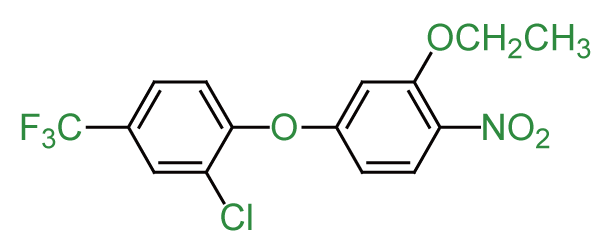- Ametryn
- Atrazine
- Bispyribac (sodium)
- Clethodim
- Clodinafop-Propargyl
- Cyhalofop-butyl
- Dicamba
- Diquat Dibromide
- Diuron
- Fenoxaprop-P-ethyl
- Flazasulfuron
- Fluazifop-P-butyl
- Flufenacet
- Fomesafen
- Glyphosate
- Haloxyfop-R-methyl
- Linuron
- Imazethapyr
- Metribuzin
- Nicosulfuron
- Oxadiazon
- Oxyfluorfen
- Paraquat
- Pendimethalin
- Picloram
- Propanil
- Pyrithiobac-sodium
- Quizalofop-p-ethyl
- Rimsulfuron
- Sulcotrione
- Tribenuron-methyl
- Tralkoxydim
- Triasulfuron
- Triclopyr
- Trifloxysulfuron-sodium
- Trifluralin
Trifluralin
 other name:2,6-dinitro-N,N-dipropyl-4-(trifluoromethyl)benzenamine
other name:2,6-dinitro-N,N-dipropyl-4-(trifluoromethyl)benzenamine
CAS No.: [ 1582-09-8 ]
Molecular Formula: C13H16F3N3O4
Trifluralin is a widely used herbicide which is a suspected carcinogen. In some countries its use is increasing, while in other countries it is banned (EU) for its persistence and its threat to ecosystems.
Trifluralin is a selective, pre-sowing or pre-emergence herbicide used to control many annual grasses and broadleaf weeds in a large variety of arable and horticultural crops . One of the dinitroanaline herbicides, trifluralin prevents weed growth by inhibiting root development through the interruption of mitosis early developmental cell division. Trifluralin is applied as a soil-incorporated pesticide, though there are also some surface uses.
APPLICATIONS
Biochemistry
Microtubule assembly inhibition.
Mode of action
Selective soil-herbicide, which acts by entering the seedling in the hypocotyl region. Also inhibits root development.
Uses
Pre-emergence control of many annual grasses and broad-leaved weeds in brassicas, beans, peas, carrots, parsnips, lettuce, capsicums, tomatoes, artichokes, onions, garlic, vines, strawberries, raspberries, citrus fruit, oilseed rape, peanuts, soya beans, sunflowers, safflowers, ornamentals, cotton, sugar beet, sugar cane, and in forestry. Used with linuron or isoproturon for control of annual grasses and broad-leaved weeds in winter cereals. Normally applied pre-planting with soil incorporation, at 0.5-1.0 kg/ha, but post-planting application is also possible for some crops.
Formulation types EC; GR.
Our Technical Material (TC) of Trifluralin have the specification as per HG 3701-2002
| Items | Specification |
|---|---|
| Appearance | yellow to brown crystal solid |
| Content | 96% min. |
| Dipropylamine | 1 mg/kg max. |
| Acetone Insoluble matter | 0.2% max. |
| Acidity (as H2SO4) | 0.2% max. |
| Water | 0.2% max. |
GHS complaint Safety Data Sheet (SDS) for commercial product of Trifluralin is available uopn requested.
